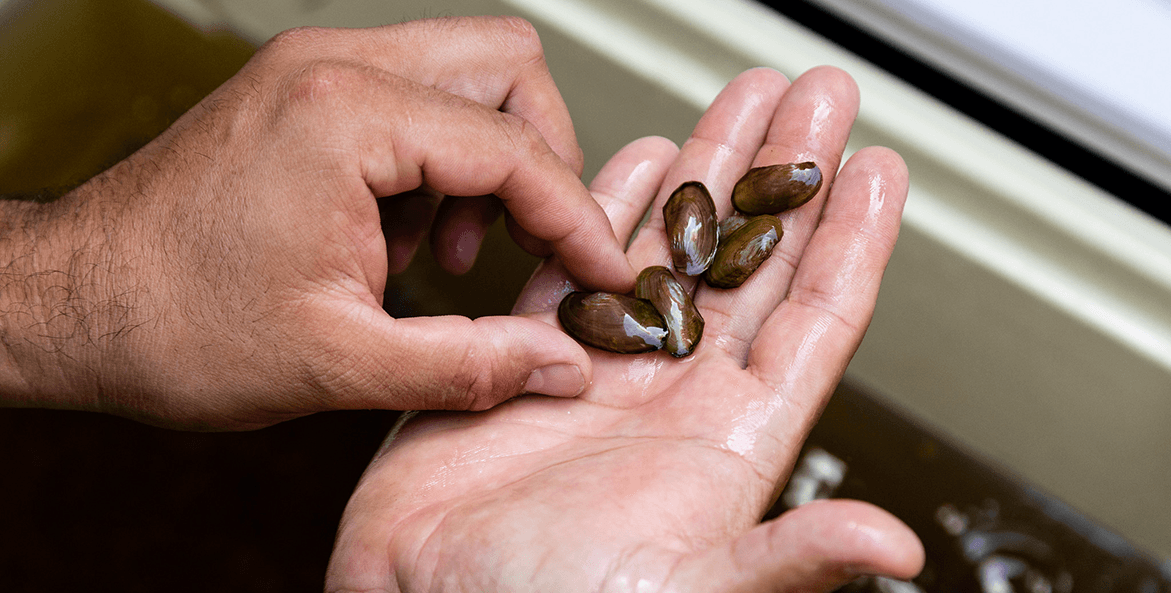Are mussels and clams good for water quality like oysters?
DR. JOE WOOD: Oysters are commonly acknowledged for improving water quality through filtering, but the Bay watershed is full of other filter feeders that don’t get the same credit. Hard clams are grown by the millions in the lower Bay. In the headwaters, there are over 50 different species of freshwater mussels. Even some aquatic insects feed through filtering.
Generally, most native filter feeders improve water quality by taking in algae or nutrients from the water and incorporating it into their tissues or depositing it on the water’s bottom. However, most of these nutrients are eventually recycled back into the water column, providing only a temporary benefit. In some cases, however, shellfish communities can enhance special kinds of bacteria, like aquatic probiotics, which help convert nitrogen to a gas, which is then permanently removed from the water. This effect, known as denitrification, has been demonstrated in oysters and other shellfish populations such as freshwater mussels. In addition, healthy filter-feeding populations provide habitat for aquatic insects, fisheries, and other important food webs.
The catch is that all of these critters require clean water to thrive. Just as oysters are sensitive to low oxygen levels, freshwater mussels are sensitive to ammonia pollution and sedimentation. While shellfish can improve the resiliency of our waterways, it is critical we manage the sources of pollution.
ABOUT OUR EXPERT
Dr. Joe Wood has been a scientist at the Chesapeake Bay foundation since 2014, where he works on a variety of issues including water quality standard development, cost-share implementation, and prioritization of best management practices. He received a PhD in Life Science from Virginia Commonwealth University and has published peer-review journal articles on harmful algal blooms, nutrient loading, food webs, and stream restoration



